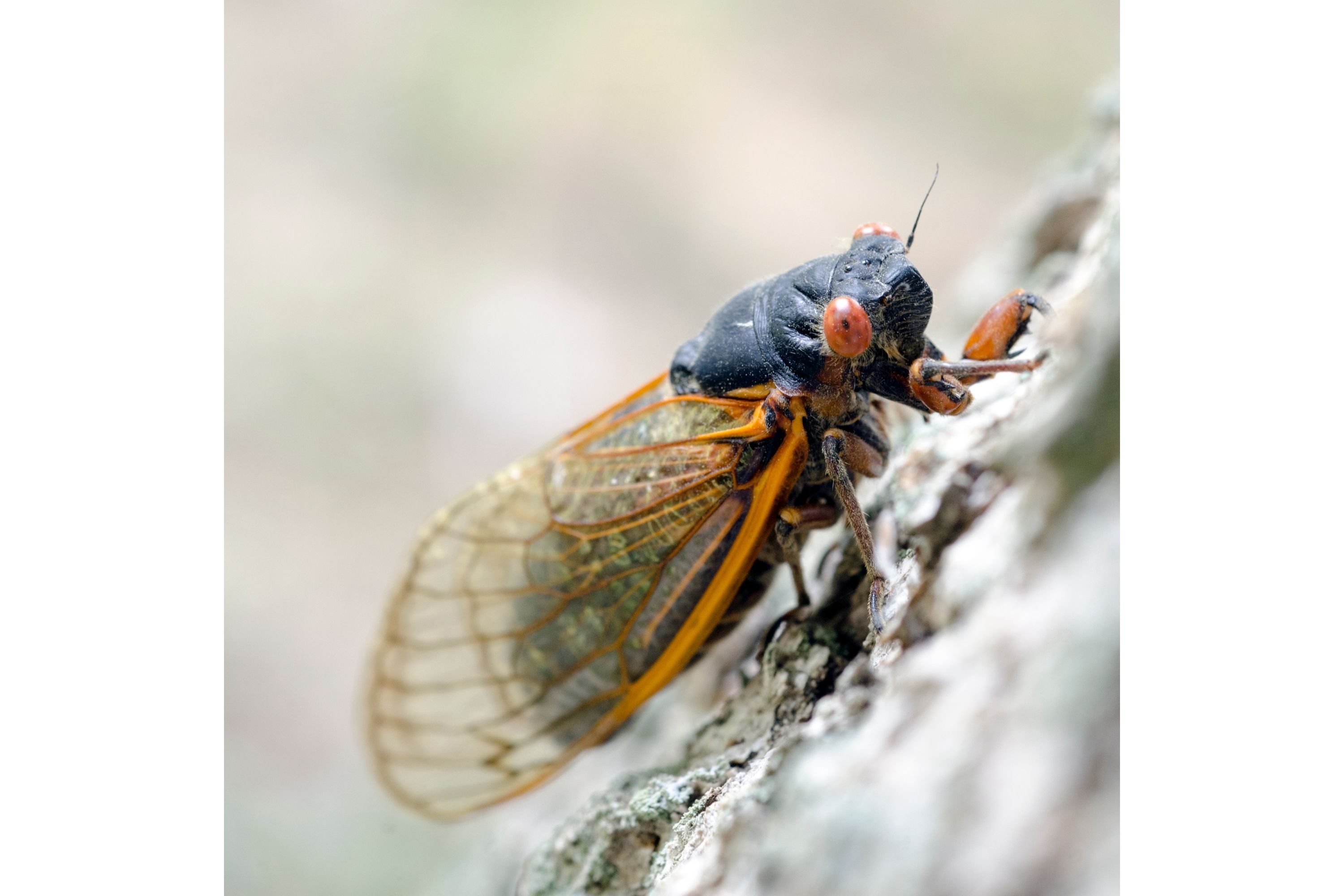Pharaoh cicada
(Magicicada septendecim)

Description
Magicicada septendecim, sometimes called the Pharaoh cicada or the 17-year locust, is native to Canada and the United States and is the largest and most northern species of periodical cicada with a 17-year lifecycle. Like other species included in Magicicada, the insect's eyes and wing veins are reddish and its dorsal thorax is black. It is distinguished by broad orange stripes on its abdomen and a unique, high-pitched song said to resemble someone calling "weeeee-whoa" or "Pharaoh", features it shares with the newly discovered 13-year species Magicicada neotredecim. Because of similarities between M. septendecim and the two closely related 13-year species M. neotredecim and M. tredecim, the three species are often described together as "decim periodical cicadas." Their median life cycle from egg to natural adult death is around seventeen years. However, their life cycle can range between thirteen and twenty-one years. Historical accounts cite reports of 15- to 17-year recurrences of enormous numbers of noisy emergent cicadas ("locusts") written as early as 1733. John Bartram, a noted Philadelphia botanist and horticulturist, was among the early writers that described the insect's life cycle, appearance and characteristics. On May 9, 1715, the Rev. Andreas Sandel, the pastor of Philadelphia's "Gloria Dei" Swedish Lutheran Church, described in his journal an emergence of Magicicada's Brood X. Pehr Kalm, a Finnish naturalist visiting Pennsylvania and New Jersey in 1749 on behalf of the Royal Swedish Academy of Sciences, observed in late May another emergence of that brood. When reporting the event in a paper that a Swedish academic journal published in 1756, Kalm wrote: The general opinion is that these insects appear in these fantastic numbers in every seventeenth year. Meanwhile, except for an occasional one which may appear in the summer, they remain underground. There is considerable evidence that these insects appear every seventeenth year in Pennsylvania. Kalm then described Rev. Sandel's report and one that he had obtained from Benjamin Franklin that had recorded in Philadelphia the emergence from the ground of large numbers of cicadas during early May 1732. He noted that the people who had prepared these documents had made no such reports in other years. Kalm further noted that others had informed him that they had seen cicadas only occasionally before the insects emerged from the ground in Pennsylvania in large swarms on May 22, 1749.
Taxonomic tree:







